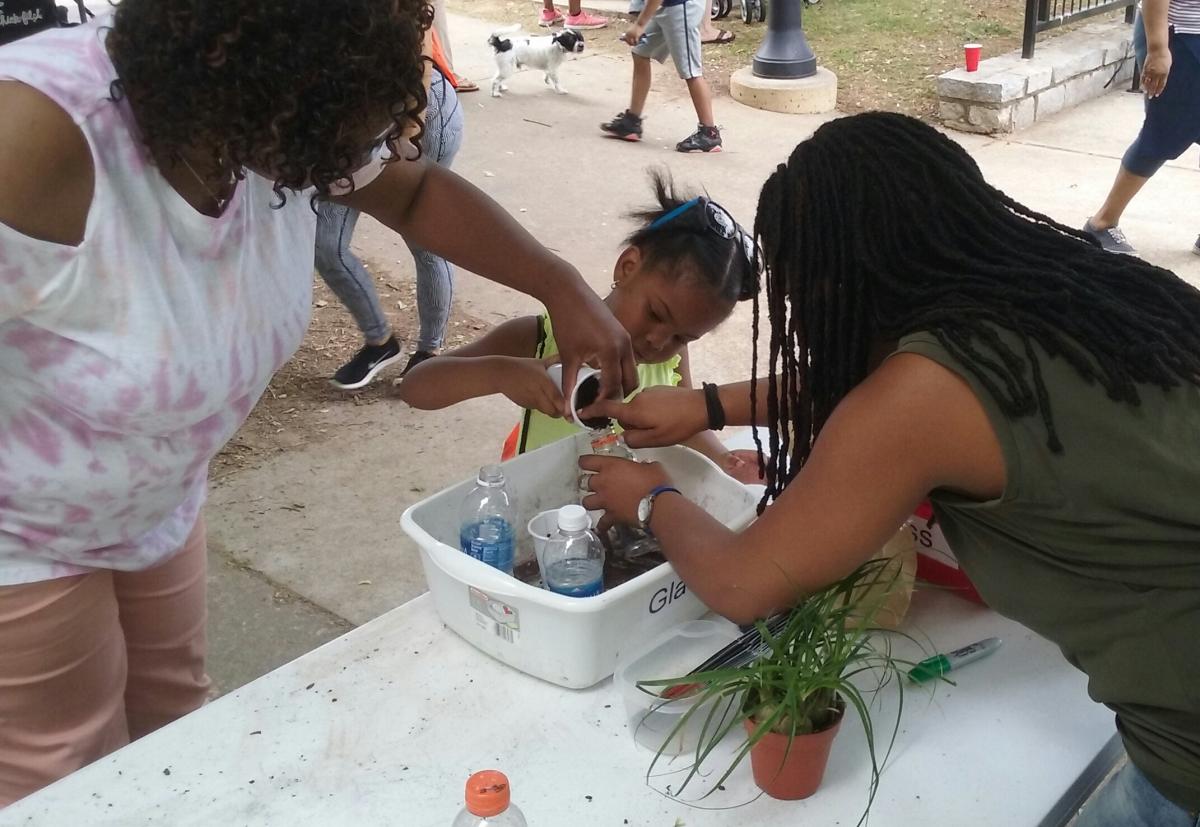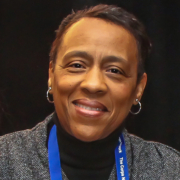

Most Corps engage young adults age 16 and over. However, in honor of the National Park Trust’s Kids to Parks Day this Saturday, May 20, we interviewed a Corps that provides stellar programming for younger kids in their community. Learn about how Greening Youth Foundation in Atlanta helps educate youth of color about how they can get involved in conservation.
Greening Youth Foundation (GYF), located in Atlanta, GA, provides environmental education programming for youth of color ranging from kindergarten to twelfth grade. GYF serves City of Atlanta Recreation Centers, Hollis Innovation Academy, Dunbar Elementary, and Boys & Girls Clubs.
There are three distinct sections of GYF’s education program: CLEAN curriculum, the Green Speaker series, and field trips.
CLEAN curriculum – Children Living Energetically and Advancing Nature – was developed specifically for the demographic area GYF serves . It teaches environmental literacy to youth of color and engages them in the outdoors.
The Green Speaker series gives youth of color the opportunity to hear from professionals in conservation, environmental science, and STEM who look like them; something most youth of color don’t see on a daily basis. After learning the basics about a given career field from GYF, students get to dive deeper by listening to speakers discuss what it’s like in that occupation. In the past, a marine biologist, who happens to be a woman of color, introduced the students to the world of studying the oceans, discussing her work with sea turtles and the human impact on them.
Lastly, field trips play a significant role in this program. During these trips, youth build on the foundation of knowledge learned in the classroom and connect it to being outdoors.
“Our whole focus is really making it fun, interactive, and culturally relevant,” said Angelou Ezeilo, CEO and Founder of GYF. “The demographic we work with is ethnically diverse. We make sure from the music to the activities that it’s all relevant for the young people so that they can relate to it and the images they see are at the forefront of our minds.”

Grounded in public-private partnerships, the program formed on the realization there weren’t many programs for youth of color that address environmental education. In the beginning GYF, did after school programs and festivals to promote environmental awareness and increase literacy among young people about the environment and wellness.
Although GYF has experienced many successes, the program has endured some roadblocks along the way. A big challenge is simply getting children – especially teenagers – outside. They are working on finding a book, or even writing a book, that discusses how to engage children outdoors when there are so many competing factors, like technological devices. GYF wants youth to be in the moment and enjoy the outdoors.
Another challenge is funding. In some ways, this challenge has been addressed through public-private partnerships. For example, Spelman College supports GYF by having college students participate in the program. Managed by Gabriella Logan, GYF’s Public School Initiative Program Manager, and Jared Hopkins, PSI Assistant Manager, Spelman students are trained and certified to teach GYF’s curriculum. The college students in this program – who are called C.H.I.P.S., Collegiate and High School Internship Program – work in schools, recreation centers, and boys & girls club.
“Funding has been very challenging. Getting grants and so forth,” said Ezeilo. “Environmental programming grants are really hard to come by.”
The overarching challenge the program faces is that most environmental education materials are not tailored to youth of color. It is up to GYF to create or customize relevant materials for the audience they serve. This involves developing materials and activities that include language, music, and games that students will relate to. In order to provide trainings that “stick,” it is essential to create a culturally competent way of reaching youth in the outdoors. This is a fete GYF intends to overcome with a book.
Although funding proves to be a challenge, Greening Youth has successfully exposed youth of color to the outdoors. Logan states, “The young people that we work with are not necessarily allowed the opportunity to go outside just to get fresh air during the school day. We find when we come and do programming with the students, we’re exposing them to the outdoors in a different context then they might be used to. We try to engage them in nature and looking at the animals and how all of that ties together. Not necessarily just going outside to play.”
GYF explains that the CLEAN curriculum and Green Speaker series is important because it enables younger kids to envision themselves in conservation or environmental science careers long before these topics are brought up in high school. In fact, science isn’t normally taught in the classroom until third grade.

Through their programming, Greening Youth is committed to exposing youth to these different careers and being outdoors. Their programming positively affects students in that, by the time they are older, students already have a sense of what environmental science is and how it effects everyone, especially the black community.
Logan explains, “Starting at a young age helps to cultivate knowledge of the community’s environment they live in so they will be able to a make a positive change in the future.” Many program participants have indicated their interest in conservation or environmental science occupations in the future. Ezeilo attributes this factor to the “lightbulb going off”.
The relationship GYF has built with children over the years has created a yearning among them to learn more about the outside and their community. For older youth, GYF offers its Conservation Corps and internship programs for college students that give teens and young adults of color the opportunity to actually serve on public lands and gain hands-on job experience in conservation.
“You have to see it, to be it” – Ezeilo’s favorite quote by Sally Ride serves as the premise of her program. Youth in urban communities need to see examples of people in conservation careers that look like them. Participants in the Green Speaker Series serve as models and possibility of what the future could be. Within this program, youth are excited and understand the importance of environmental science and conservation through hands on experience.


































































